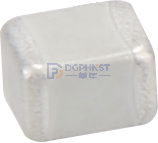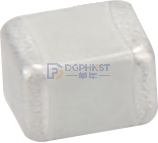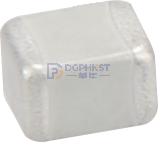Murata Manufacturing Co. launched a new antenna anti-interference device, Radisol, in August with a size of 0603. This product can suppress interference between close range antennas and is particularly suitable for improving the antenna characteristics of smartphones and wearable devices. Here, we will provide you with a detailed introduction: What is the working principle of antenna anti-interference device? How effective is Radisol in suppressing the performance degradation of terminal device antennas?
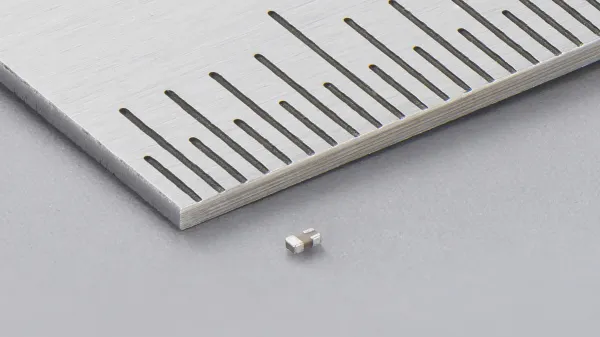
Murata's new product appearance (0603 size)
Why do we need an antenna anti-interference device?
In recent years, smartphones and wearable terminals have begun to be equipped with many wireless communication functions such as Wi Fi, Bluetooth, and GPS, and antennas corresponding to each wireless communication standard have been densely installed to transmit and receive signals.
In addition, in order to improve communication quality, the technology of combining multiple antennas is also widely used. For example, MIMO (Multi Input Multi Output) that uses multiple antennas on both the transmitter and receiver to improve communication quality and speed; And Non Terrestrial Network (NTN) - a wireless communication network that includes mobile communication, formed by multi-layer connections between ground base stations, maritime vessels, high-altitude unmanned aerial vehicles (HAPS), and communication satellites deployed in space.
That is to say, there is a tendency for the number of antennas equipped in the terminal to further increase.
If antennas with similar frequency bands are installed at high density, some power that should have radiated into space will interfere with neighboring antennas and flow into them, resulting in a decrease in the radiation characteristics of the antennas; Keeping antennas at a sufficient distance from each other can ensure isolation and prevent interference, but for smartphones and wearable terminals, ensuring space within a narrow casing is very difficult.
Therefore, in design, discrete components are often used to form a filter function called an energy storage circuit on the interfering antenna to suppress interference between antennas - that is, an inductor and a capacitor are connected in parallel to form a resonant circuit, which can produce an effect where neither inductor nor capacitor seems to exist at a specific resonant frequency. In interference countermeasures, it is used as a band stop filter (BSF) to truncate frequency components within a specific range.
However, this method has a problem: due to the insertion loss of the energy storage circuit, the signal loses power when passing through the transmission path. Although the characteristics of the antenna affected by interference are improved, the antenna characteristics on the side of the energy storage circuit will deteriorate.
Therefore, Murata developed Radisol, an antenna anti-interference device that combines high-precision filter characteristics and low insertion loss, through unique ceramic multilayer technology and RF circuit design technology. By using Radisol around the antenna, interference between close range antennas can be prevented with lower insertion loss. Moreover, the miniaturization of Radisol helps to stabilize wireless communication capabilities in devices such as smartphones and wearable terminals that are equipped with multiple antennas in limited spaces.
How does Radisol work?
Radisol is a device that has the function of suppressing mutual interference between close range antennas. The following figure shows an equivalent circuit example of Radisol, using Murata's proprietary multi-layer technology to place two coils L1 and L2 in close proximity to generate magnetic field coupling, and the structure also generates mutual inductance between the short-circuit paths. This mutual inductance forms a parallel resonant circuit with L2 and C1, suppressing unnecessary power inflow and interference and improving antenna characteristics.
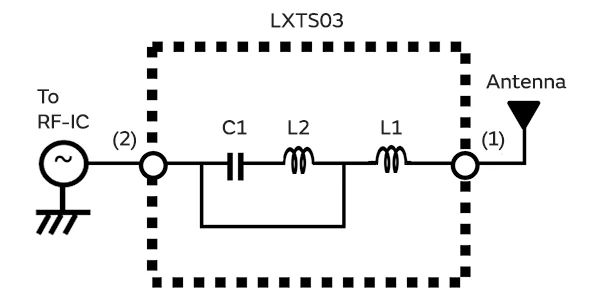
Example of equivalent circuit of antenna anti-interference device Radisol
The Radisol with a size of 0603mm has 2 terminals. As an ultra small chip component, by improving the circuit design to suppress the inductance value of the passband path, the installation pads of the existing matching circuit can be used unchanged without affecting the matching characteristics. In addition, compared with the interference countermeasure using a parallel resonant circuit composed of L and C components, Radisol can achieve interference countermeasure with only one component, and the installation area can be reduced by about 62% compared to the former.
Comparison of anti-interference measures for antennas
The above figure compares the differences among three strategies and illustrates the working principle of Murata Radisol devices. The three countermeasures are: antenna free anti-interference countermeasure; Countermeasures for using L and C components to form a parallel resonant circuit; And use a Radisol antenna anti-interference device.
1. Situation without countermeasures
At close range between antennas A and B, some of the radiated power from antenna A flows into antenna B and interferes with it, resulting in the degradation of antenna A's characteristics.
2. Previous countermeasures
The common solution is to install an LC parallel resonant circuit as a notch filter on the interfering antenna B to suppress the incoming power. However, if both parties have antennas with similar communication frequency bands, there is a concern that the antenna radiation efficiency may deteriorate due to losses in the circuit. Similarly, the characteristics of antenna B deteriorate.
3. Countermeasures for using Radisol
By using Radisol instead of LC parallel resonant circuit, even if there is mutual interference between antennas with similar communication frequency bands, the radiation characteristics of antenna B can be suppressed. Ensure that both antennas A and B have the required antenna characteristics.
The working principle of Radisol
The equivalent circuit in the above figure illustrates the working principle of Radisol:
Firstly, L1 and L2 undergo magnetic coupling, and in addition, mutual inductance (+M) occurs in the short-circuit path;
Composed of a parallel resonant circuit (blue box part) containing a short path mutual inductance (+M), this mutual inductance acts as an ideal inductor without loss, making the parallel resonant circuit a notch filter with high Q. In addition, by increasing the inductance of L2 (while increasing the resistance component), the fluctuation of antenna resonance frequency caused by changes in inductance can be suppressed;
On the other hand, power radiation does not pass through L2, which has a resistive component (a part of insertion loss) and has a significant impact on the resonant frequency of the antenna, so power radiation is only affected by L1. Therefore, by reducing the value of L1, the insertion loss during power radiation and its impact on the antenna resonance frequency can be suppressed at a lower level.
What is the effect of using Radisol?
By using the test circuit board, the improvement effect of radiation characteristics can be observed.
The following figure shows the GPS antenna (1.5GHz) and Wi Fi ™ Test circuit board with 2.4GHz/5GHz antenna placed at close range.
=
GPS antenna section and Wi Fi antenna section before installing Radisol
Install Radisol on the Wi Fi antenna side that affects the GPS antenna (as shown in the figure below).
GPS/Wi Fi antenna matching circuit before and after installing Radisol
It can be clearly seen (as shown in the figure below) that the installation of Radisol has improved the efficiency of the GPS antenna. In addition, installing Radisol has no effect on the resonant frequency of Wi Fi antennas, so the antenna characteristics will not significantly deteriorate:
There is a significant improvement in the radiation efficiency of GPS antennas before and after installing Radisol, while the radiation efficiency of Wi Fi antennas before and after installing Radisol is not affected.
Summary
When using discrete components to form energy storage circuits, it takes time to adjust the constants. Therefore, Murata's Radisol devices have pre assumed antenna combinations that may require countermeasures and prepared a rich product lineup of 11 types.
Murata's Radisol antenna anti-interference device is suitable for small, multi antenna terminal devices such as smartphones, smartwatches, and wearable devices.



